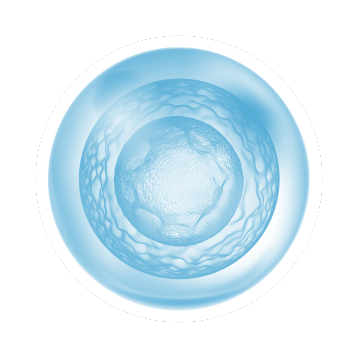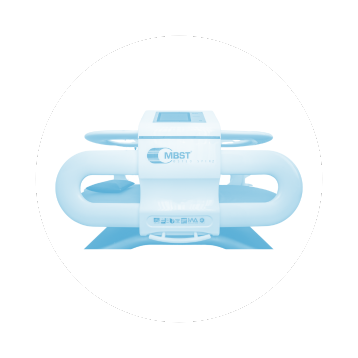
The journey of magnetic resonance therapy started with some unexpected findings. In the early days of magnetic resonance imaging (MRI), the technology was not totally efficient yet, so patients had to be examined several times. Radiologists noticed that patients with musculoskeletal issues who had multiple MRI scans reported notable benefits. It was difficult to find a reason for this effect, and it was initially believed to have just been a placebo.

To explore these effects further, a team of physicists, biologists and physicians began investigating in interdisciplinary collaboration with universities. They discovered that it was likely the principle of magnetic resonance that caused these effects: the stimulation of hydrogen protons in the body’s tissue. This discovery marked the start of the development of the MBST® therapy systems over the next few years.

The challenge was to achieve the effects of MR in smaller, more specialised, cost-efficient devices, rather than needing to rely on the large and expensive MRI scanners. The solution: magnetic resonance devices designed for the targeted stimulation of specific cells and tissues. The prototypes were tested for about two years in five different specialist orthopaedic clinics. The positive treatment results made it worthwhile to take the next step in research and development.

Different tissues have different parameters, for example, different relaxation times. To develop the MBST® technology, these parameters were extensively studied. The goal was to figure out the right treatment frequencies needed for each individual type of tissue. In one of the first studies conducted by the Sports University Cologne, MRI scans showed that the thickness, volume and amount of cartilage in the knee increased after the MBST® therapy.*

Research efforts were intensified to better understand the positive effects of MBST®. Early on, a positive effect on cell regeneration was clear, as experiments showed increased proliferation of cartilage and bone cells by more than 200%.* Over time, further studies confirmed the effects on the circadian cell rhythm, inflammatory reactions and pain signalling pathways, among others.* Basic research remains a crucial part of MBST® therapy development, with new studies continuously being planned and conducted.

Clinical studies from practical application also confirm the positive effect of MBST® therapy with a success rate of 80-85%.* Patients report less pain, improved mobility, and greater ease in performing everyday tasks. To keep the certification issued by TÜV SÜD verifying that MBST® devices are built and operate according to EU regulations, regular proof is required to ensure the machines operate safely and effectively.

Knowledge from research and practical application is used for the development of new device generations, broadening the scope of conditions for which MBST® may be applied. MBST® is constantly improving its systems, innovating its patented technology to optimise treatment quality, application areas and practical application.
Steinecker-Frohnwieser et al. 2014, J. Orthop. Rheum., 9/2014 | Steinecker-Frohnwieser et al. 2018, Clin Exp Rheumatology 36, 294–301 | Thöni et al. 2021, Chronobiology International, DOI: 10.1080/07420528.2021.1910288 | Steinecker-Frohnwieser et al. 2021, Int J Molecular Sciences 22, 5959 | Mann et al. 2022, frontiers in cellular neuroscience 16, 859545 | Klinische Bewertung (CE-TPL-01) gemäß Medical Device Regulation (EU) 2017/745 und MEDDEV 2.7/1 Rev. 4 für die MBST®-Produktfamilie, medXteam GmbH, 22.03.2022, Rev. 2.0 | Froböse et al. 2000, Orthopädische Praxis 8/2000, 510-515
You are currently viewing a placeholder content from Google Maps. To access the actual content, click the button below. Please note that doing so will share data with third-party providers.
More Information